
We began the day by driving the short distance south from Greymouth to Shantytown. This is an open-air museum that houses a number of historic buildings from around the region. They have been moved to the Shantytown site and restored. The first thing that you see as you arrive is an impressively large water wheel. This is a replica of a wheel built by Chinese labourers to provide power to the gold extraction process. The Chinatown area was a replica of the huts that the immigrant Chinese lived in during the gold rush years. It showed the terribly primitive conditions that they were prepared to live under.
![]()
![]()
![]()
![]()
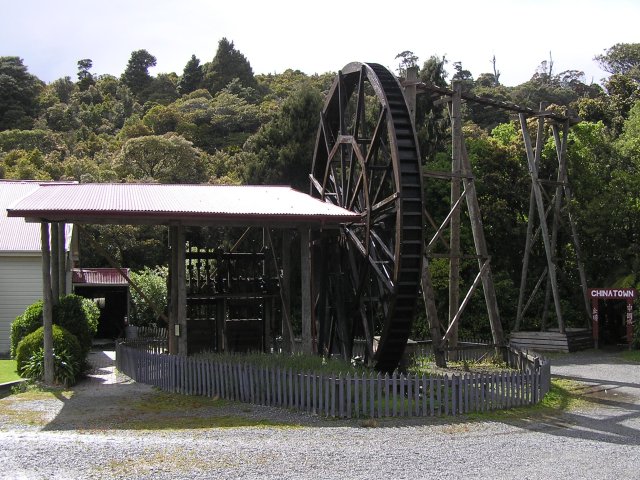
![]()
![]()
![]()
![]()
The waterwheel is huge; the Chinatown arch on the right is tall enough to walk under so the wheel must be over 10 meters high
We wandered around the other buildings as they contained interesting artefacts. The hospital had some rather grim looking 19th and early 20th century equipment. Another building held a huge collection of gems and minerals from around the world. The cross-section of a meteorite found locally was very interesting, it was almost pure metal.
Shantytown has a short stretch of railway built after the goldrush to service a logging operation. Now it is used for tourism with a small steam engine pulling a couple of passenger wagons. At the far end of the line the engine stops for a few minutes and you can walk across the footplate. On the way back to the main part of Shantytown there’s another stop. We got off and walked to the gold panning area.
![]()
![]()
![]()
![]()
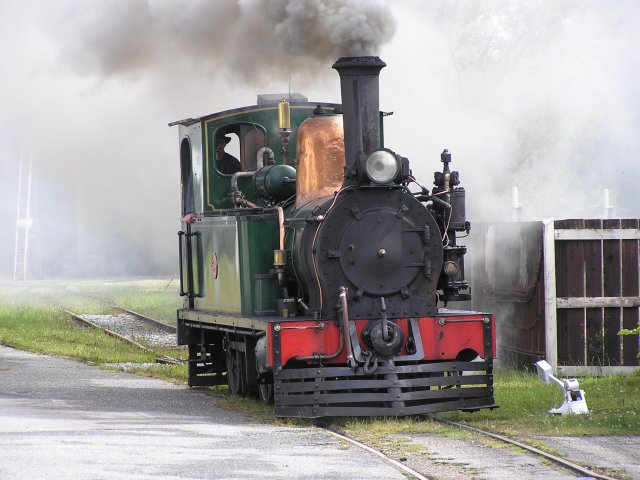
![]()
![]()
![]()
![]()
Approaching the station from the engine shed
![]()
![]()
![]()
![]()
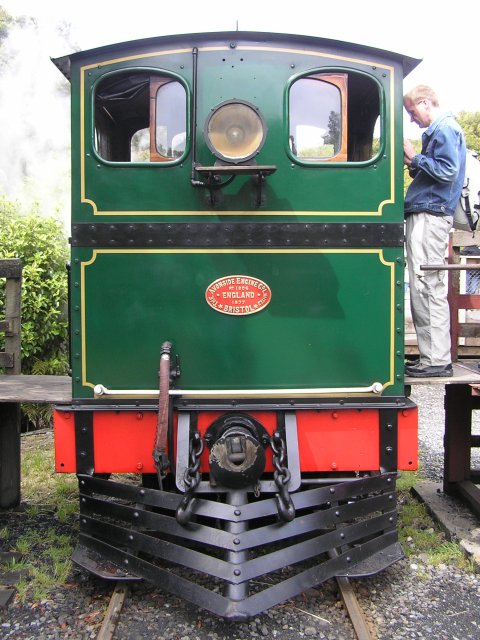
![]()
![]()
![]()
![]()
Visiting the footplate at the far end of the line
![]()
![]()
![]()
![]()
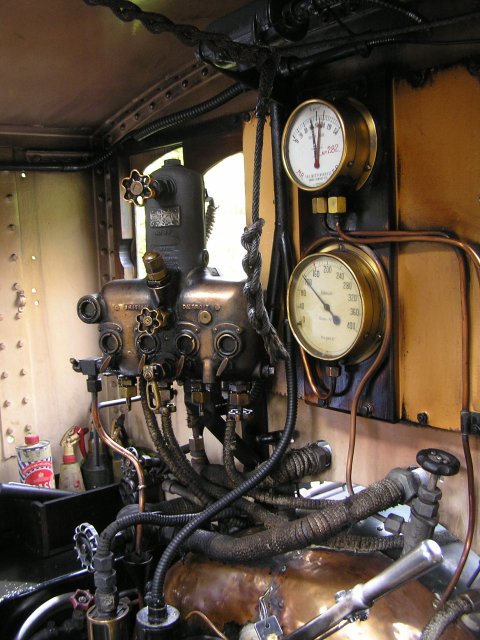
![]()
![]()
![]()
![]()
The cab is kept clean - note the can of Brasso!
The gold panning was a little too well organised. We were given a pan that was already been filled with gravel. We were shown the technique for panning, separating the flakes of gold from the grit. The key to the process is that gold is five to ten times heavier than rock. By repeatedly shaking the pan then swilling off the top layer of gravel you are eventually left with flakes of gold sitting in the pan. What surprised me was just how viciously you can treat the pan. The gold stays at the bottom and you would have to be very clumsy to wash it away. Everyone who tried the panning found some gold so we concluded that the gravel had been seeded with a few flakes to keep people happy. Maybe we were just too cynical!
![]()
![]()
![]()
![]()
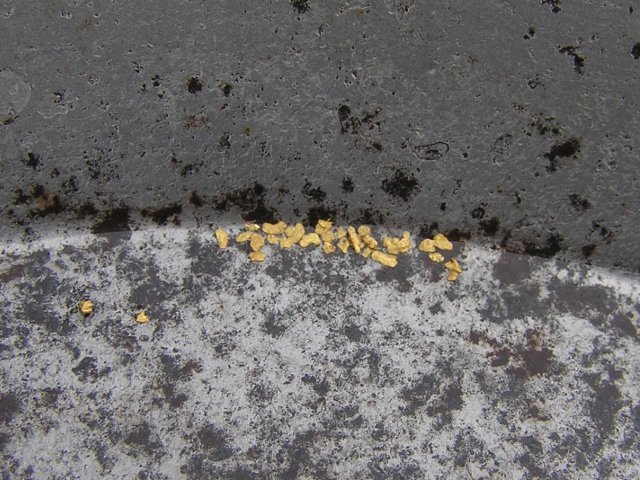
![]()
![]()
![]()
![]()
I’m rich! 10p’s worth of gold for 5 minutes work
We headed south to the Franz Joseph Glacier. We had booked a helicopter trip over the glaciers but when we arrived at the flight centre we were told that it was too windy to fly. However, they said that the forecast for tomorrow was better so we decided to move the booking to first thing the next day and fly from Fox Glacier where we had planned to stay the night.
After a quick mooch around the township of Franz Joseph (there’s not much there other than sight-seeing flight offices, souvenir shops and cafés) we headed to see the glacier.
After a walk up a fairly steep path we got to a viewing platform overlooking the glacier. The area was first explored by an Austrian man called Julius Haast in 1865. He named the glacier after the Austrian emperor, Franz Joseph I. (Haast got a town named after him which we drove through the next day). We didn’t bother getting close to the glacier as we were going to do that at Fox glacier. However, its huge size was apparent even from a distance.
![]()
![]()
![]()
![]()
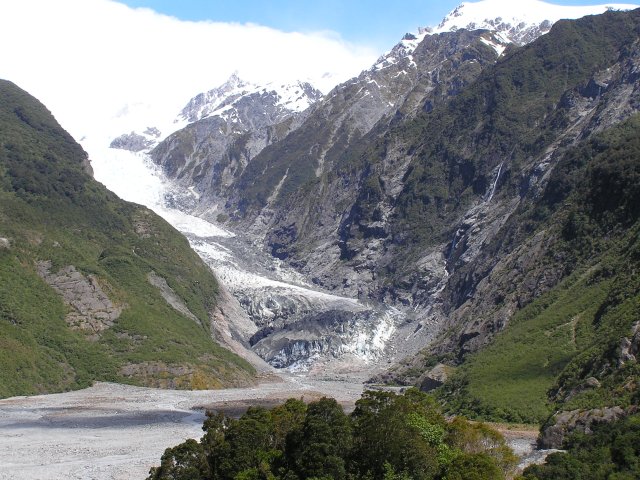
![]()
![]()
![]()
![]()
The terminal face of the Franz Joseph glacier
![]()
![]()
![]()
![]()
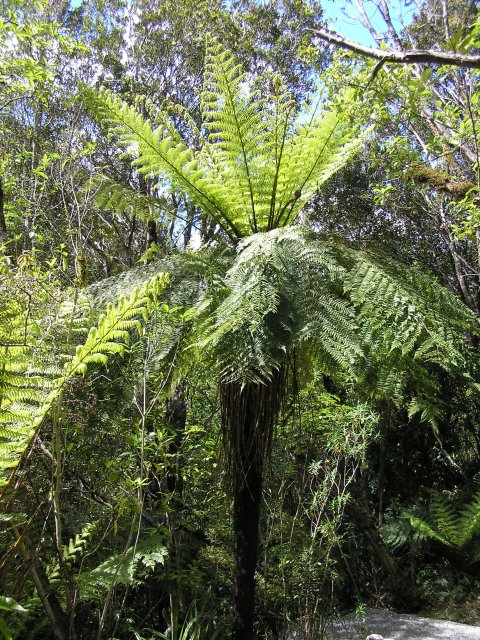
![]()
![]()
![]()
![]()
The icon of New Zealand, the silver fern, growing near the path to the glacier
From the Franz Joseph glacier we headed south to the Fox Glacier. We’d booked a walk to the terminal of the glacier. A coach took us from the village of Fox Glacier to a car park about a mile away from the glacier. We then had a gentle stroll to the glacier which we got a good view of as we approached the terminal face. The weather had greatly improved into a lovely sunny evening. Quite bizarrely, despite the sun, at one point we had snow falling on us as it was blown from the mountains beside the glacial valley.
![]()
![]()
![]()
![]()
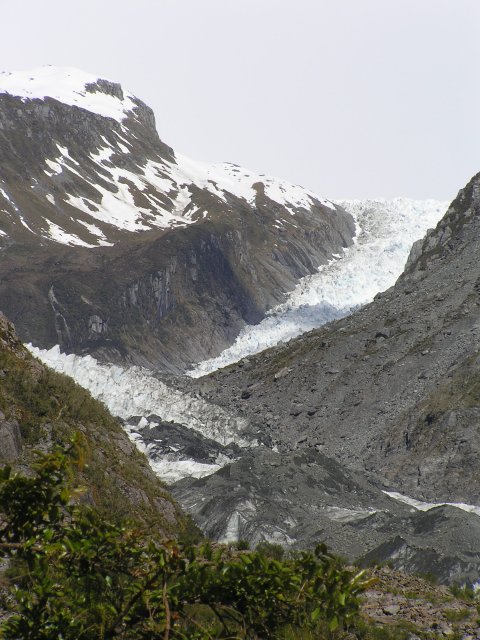
![]()
![]()
![]()
![]()
The Fox Glacier as it descends down its valley
![]()
![]()
![]()
![]()
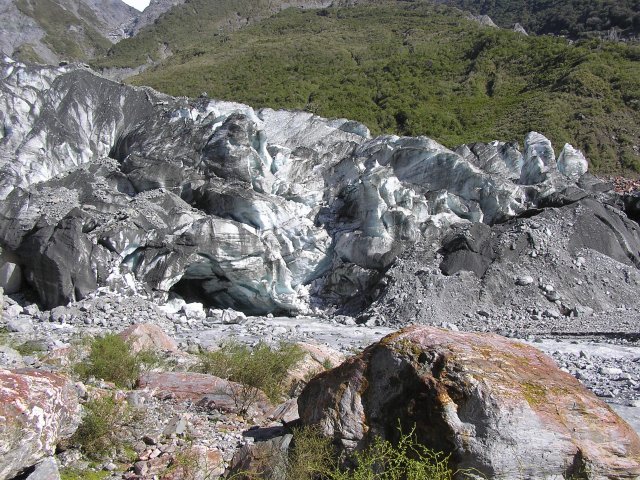
![]()
![]()
![]()
![]()
The glacier’s terminal face. The pile of rocks and gravel pushed up in front of the ice shows that the glacier is currently growing
![]()
![]()
![]()
![]()
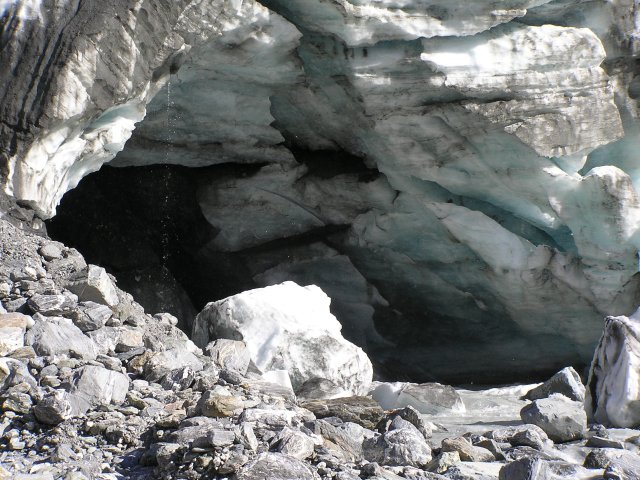
![]()
![]()
![]()
![]()
An ice cave in the terminal face from which the Fox River emerges. The water is amazingly clear
As we were part of a guided tour we were able to walk right up to the face of the glacier. The ground is unstable so unguided walkers are kept back at a safe distance. Our guide used his ice-axe to chop off a lump of the glacier for us to hold. A 900 year old lump of ice feels just as cold as modern ice!
![]()
![]()
![]()
![]()

![]()
![]()
![]()
![]()
A panorama of the glacier’s terminal face
![]()
![]()
![]()
![]()

![]()
![]()
![]()
![]()
The Fox Glacier and the Fox River winding through the valley they created
![]()
![]()
![]()
![]()
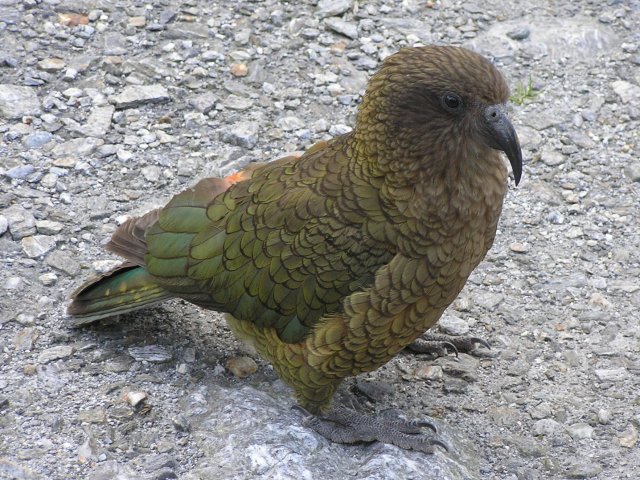
![]()
![]()
![]()
![]()
A Kea in the glacier car-park. These birds are notorious for stripping the rubber from vehicles. This one merely tried and failed to eat a tyre of our campervan
We stayed the night in the Fox Glacier Holiday Park.